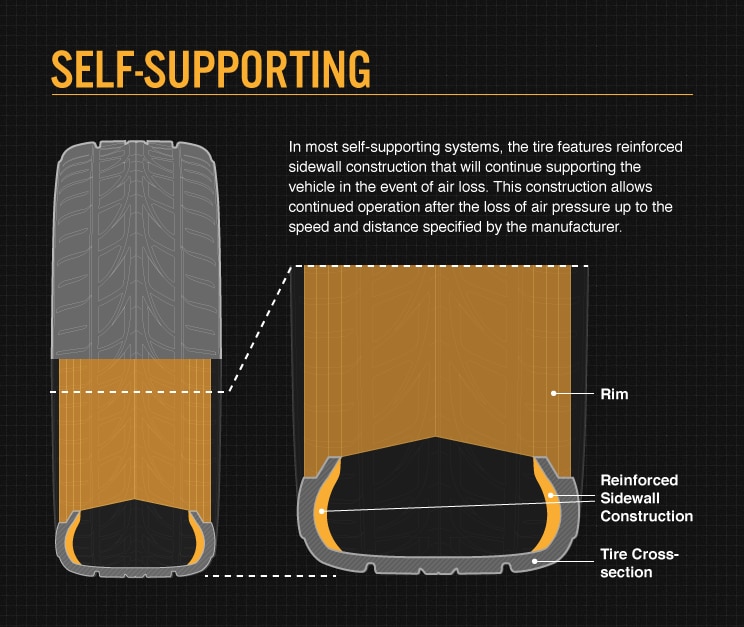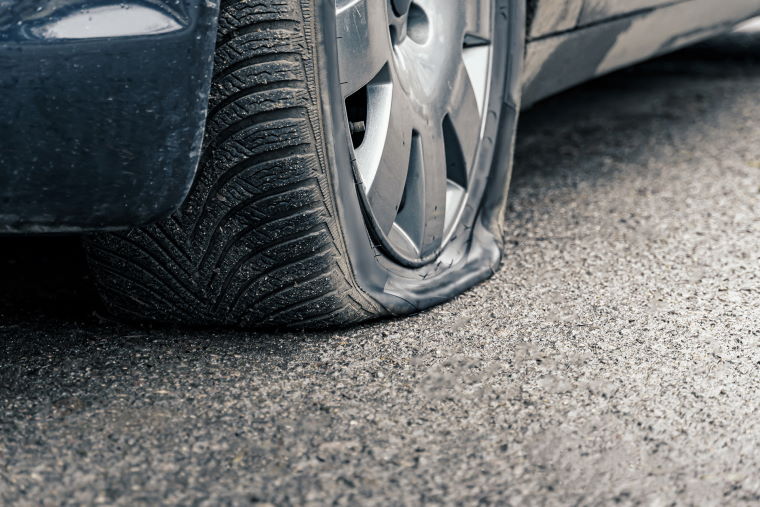How to Tell If Run Flat Tire is Punctured
To determine if a run-flat tire is punctured, look for visible damage or loss of tire pressure. Inspect the tire carefully for any signs of punctures or leaks.
If unsure, consult a mechanic for a professional evaluation before driving. A punctured run-flat tire can compromise your safety on the road and should be addressed promptly to avoid further damage. Regularly checking for punctures and addressing them promptly is crucial for maintaining the performance and longevity of your run-flat tires.
Being vigilant and proactive in identifying and addressing punctures can help ensure a smooth and safe driving experience.

Credit: m.youtube.com
Visual Inspection
When it comes to run-flat tires, it’s essential to be able to quickly identify if they have been punctured. Visual inspection is an important first step in this process as it allows you to check for any visible signs of damage. Here’s how to assess your run-flat tire for punctures through a visual inspection.
Check For Visible Punctures
One of the simplest ways to determine if your run-flat tire is punctured is by inspecting the external surface for any visible punctures or cuts. Look for sharp objects that might have caused the damage, such as nails, screws, or glass shards. If you notice a foreign object embedded in the tire, it’s a clear indication that the tire has been punctured.
Look For Bulges Or Deformities
Another important aspect of visual inspection is to look for any bulges, protrusions, or deformities on the tire’s surface. These irregularities can be an indication of internal damage and could potentially lead to a puncture. Bulges or deformities can result from the loss of air pressure due to a puncture or other underlying issues, and should be addressed immediately. Check the sidewalls and tread area for any unusual bulging or deformities that may signal a puncture.

Credit: www.bridgestonetire.com
Monitoring Tire Pressure
Properly monitoring tire pressure is essential for identifying punctures in run flat tires. Check the tire pressure regularly to ensure safe driving and detect any issues promptly.
Check Pressure Regularly
- Use a tire pressure gauge and check each tire at least once a month.
- Refer to the manufacturer’s recommended tire pressure levels for accuracy.
Notice Sudden Loss Of Pressure
- Monitor for any rapid decrease in pressure while driving.
- If you notice a significant drop in tire pressure, pull over safely to inspect the tire.
Tire Performance
Understanding your run-flat tire’s Tire Performance is crucial in determining whether it is punctured. By noticing changes in ride quality and paying attention to steering responsiveness, you can quickly identify an issue.
Notice Changes In Ride Quality
- Check for unusual vibrations or bumpy rides
- Look out for increased noise levels while driving
- Monitor for uneven tire wear on the tread surface
Pay Attention To Steering Responsiveness
- Notice any difficulty in steering or pulling to one side
- Test the precision of turns and responsiveness
- Be aware of any delays in steering input
Handling And Stability
This section focuses on the critical aspect of handling and stability when it comes to determining whether a run-flat tire has been punctured. It is essential to pay close attention to the following indicators to ascertain the condition of the tire:
Observe Any Pulling To One Side
If the vehicle begins to pull to one side while driving, it could be an indicative sign of a punctured run-flat tire. This pulling effect may suggest that the tire has lost pressure or sustained damage, affecting the overall stability of the vehicle. It is crucial to address this issue promptly to ensure safe driving conditions.
Feel For Vibrations Or Excessive Noise
Excessive vibrations or unusual noise can be telltale signs of a punctured run-flat tire. When driving, pay attention to any unusual vibrations that could indicate a loss of pressure or damage to the tire. Similarly, listen for any excessive noise, which may indicate that the tire is not functioning as intended. These sensory cues can help in identifying potential issues with the run-flat tire.
Taking Action
Discover how to identify a punctured run-flat tire and take swift action with these essential tips. From visual inspections to listening for unusual sounds, learn the telltale signs of a puncture and ensure your safety on the road.
Once you have determined that your run-flat tire is punctured, it’s time to take action. The sooner you address the issue, the better chance you have of avoiding further damage to your vehicle. Here are the steps you need to follow:Contact A Professional
It is crucial to reach out to a professional tire technician if you suspect a puncture in your run-flat tire. They have the expertise and tools to accurately assess the damage and recommend the appropriate course of action. Contacting a professional not only ensures that the issue is resolved correctly but also minimizes the risk of causing additional harm.Replace Or Repair The Tire
Based on the assessment by the professional, you might need to either replace or repair the punctured run-flat tire. The best course of action will depend on the severity of the damage and the tire manufacturer’s guidelines. In some cases, tire repair might be possible if the puncture is within specific parameters. However, if the damage is severe or outside the repair limits, tire replacement might be necessary for safety reasons. When replacing a run-flat tire, it is crucial to make sure that the new tire meets the required specifications set by the manufacturer. This includes the correct size, load capacity, and speed rating. To maintain optimal performance and safety, it is recommended to replace all run-flat tires on the same axle simultaneously. If a repair is feasible, the tire technician will assess the puncture and determine if a patch or plug is the best solution. Repairs should only be performed in accordance with industry standards and guidelines to ensure long-term reliability. Remember, regardless of whether you choose to replace or repair the punctured run-flat tire, maintaining proper tire pressure and regular inspections are essential to extend tire lifespan and ensure optimal performance.Conclusion
By taking immediate action when you suspect a punctured run-flat tire, you can prevent further damage and potential safety risks. Contacting a professional and following their advice on either tire replacement or repair will help you get back on the road safely. Remember to prioritize regular tire maintenance to avoid future issues and to ensure your tires perform at their best.
Credit: www.kwik-fit.com
Frequently Asked Questions For How To Tell If Run Flat Tire Is Punctured
Can I Drive On A Punctured Run Flat?
Yes, you can drive on a punctured run flat tire for a limited distance. However, it’s recommended to replace it as soon as possible. Driving on a punctured run flat can cause further damage to the tire and compromise your safety.
What To Do If Run-flat Tire Is Punctured?
If a run-flat tire is punctured, drive carefully to a safe spot. Do not exceed 50 miles per hour or travel too far. Get the tire inspected and repaired by a professional as soon as possible.
How Do You Know When Run-flat Tires Need Replacing?
Inspect run-flat tires for visible damage or wear, including punctures, cuts, or bulges. Replace them if tread depth is below 2/32 inch.
How Long Do Run-flat Tires Last After Puncture?
Run-flat tires can last up to 50 miles after a puncture. However, the actual distance may vary depending on driving speed and the severity of the puncture. It is crucial to consult the manufacturer’s guidelines and have the tire inspected by a professional after a puncture.
How Do I Know If My Run-flat Tire Is Punctured?
If your run-flat tire is punctured, you may notice a sudden drop in tire pressure or a visible hole or tear in the tire.
What Are The Signs Of A Punctured Run-flat Tire?
Signs of a punctured run-flat tire include a loss of tire pressure, a bulging or blistering tire sidewall, and difficulty controlling the vehicle.
Can I Drive On A Punctured Run-flat Tire?
It is not recommended to drive on a punctured run-flat tire as it can cause further damage to the tire and compromise your safety.
Conclusion
Being aware of the signs of a punctured run-flat tire is crucial for safe driving. By paying attention to the warning signals such as loss of tire pressure, unusual vibrations, or visible damage, you can promptly address any issues and avoid potential hazards on the road.
Keep an eye out for these indicators to ensure the reliability of your vehicle’s run-flat tires.


